 W
WAir Vice Marshal Donald Clifford Tyndall Bennett, was an Australian aviation pioneer and bomber pilot who rose to be the youngest air vice marshal in the Royal Air Force. He led the "Pathfinder Force" from 1942 to the end of the Second World War in 1945. He has been described as "one of the most brilliant technical airmen of his generation: an outstanding pilot, a superb navigator who was also capable of stripping a wireless set or overhauling an engine".
 W
WLester Joseph Brain, AO, AFC was a pioneer Australian aviator and airline executive. Born in New South Wales, he trained with the Royal Australian Air Force (RAAF) before joining Queensland and Northern Territory Aerial Services (Qantas) as a pilot in 1924. He was awarded the Air Force Cross in 1929, after locating the lost aircraft Kookaburra in northern Australia. Having risen to Chief Pilot at Qantas by 1930, he was appointed Flying Operations Manager in 1938. As a member of the RAAF reserve, Brain coordinated his airline's support for the Australian military during World War II. He earned a King's Commendation for his rescue efforts during an air raid on Broome, Western Australia, in 1942, and was promoted to wing commander in 1944.
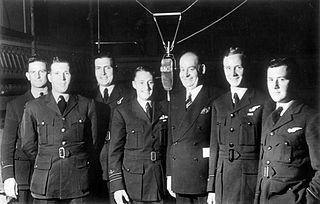 W
WJames Catanach, known as "Jim" or Jimmy, was an Australian Handley Page Hampden bomber pilot who was taken prisoner during the Second World War. Reportedly the youngest squadron leader bomber pilot in the Royal Australian Air Force at the age of twenty he is notable for the part he took in the 'Great Escape' from Stalag Luft III in March 1944 and as one of the men re-captured and subsequently shot by the Gestapo.
 W
WFrederick Sidney Cotton OBE was an Australian inventor, photographer and aviation and photography pioneer, responsible for developing and promoting an early colour film process, and largely responsible for the development of photographic reconnaissance before and during the Second World War. He numbered among his close friends George Eastman, Ian Fleming and Winston Churchill.
 W
WRichard (Dick) Cresswell, DFC was an officer and pilot in the Royal Australian Air Force (RAAF). He held command of No. 77 (Fighter) Squadron twice during World War II, and again during the Korean War. Cresswell was credited with being the first RAAF pilot to shoot down an enemy aircraft at night over Australian soil, the only man to serve as commanding officer of an RAAF squadron on three occasions during wartime, and the first officer to lead a jet-equipped Australian squadron in combat. His performance in Korea earned him both the Commonwealth and the US Distinguished Flying Crosses.
 W
WSir Thomas Charles Drake-Brockman, was an Australian politician who served as a Senator for Western Australia from 1959 to 1978 and also briefly in 1958. He was a member of the National Country Party. He served as Minister for Air from 1969 to 1972.
 W
WAir Commodore Sir Hughie Idwal Edwards, was a senior officer in the Royal Air Force, Governor of Western Australia, and an Australian recipient of the Victoria Cross, the highest decoration for gallantry "in the face of the enemy" that can be awarded to members of the British and Commonwealth armed forces. Serving as a bomber pilot in the Royal Air Force (RAF), Edwards was decorated with the Victoria Cross in 1941 for his efforts in leading a bombing raid against the port of Bremen, one of the most heavily defended towns in Germany. He became the most highly decorated Australian serviceman of the Second World War.
 W
WCharles William Jackson Falkinder, was an Australian air force officer and politician.
 W
WRoy Francis Goon was an Australian World War II fighter pilot. Goon held Commercial pilot licence No. 511 and was originally an instructor with Royal Victorian Aero Club (RVAC) at Essendon Airport, then later at Moorabbin, Wangaratta, Benalla, Albury, Corowa, Shepparton, Mildura and Swan Hill. Goon was also held Aircraft Engineer's Licence C and D grades.
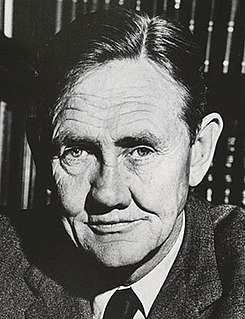 W
WSir John Grey Gorton was the nineteenth Prime Minister of Australia, in office from 1968 to 1971. He led the Liberal Party during that time, having previously been a long-serving government minister.
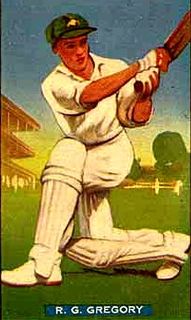 W
WRoss Gerald Gregory was an Australian Test cricketer.
 W
WCharles Raymond (Bob) Gurney, AFC was an Australian aviator who was involved in pioneering aviation in New Guinea in the 1930s. He flew with Qantas before and during the Second World War, and served with the Royal Australian Air Force from September 1939. He was killed on operations against the Japanese in the south west Pacific in 1942 flying with the United States Army Air Forces. In his aviation career "Bob" Gurney was chief pilot of Guinea Airways, a Qantas flying boat captain and a Squadron Leader in the RAAF, who even had to bomb his own home. In commemoration of his service an airport in Papua New Guinea and a street in Townsville, Queensland are named after him.
 W
WAl Hake , was an Australian Supermarine Spitfire pilot who was taken prisoner during the Second World War. He is notable for the part he took in the 'Great Escape' from Stalag Luft III in March 1944 and as one of the men recaptured and subsequently shot by the Gestapo.
 W
WKeith MacDermott Hampshire, was a pilot and ace of the Royal Australian Air Force (RAAF) during the Second World War. He saw action in twin-engine propellor-driven aircraft, flying intruder, ground attack and night fighter missions.
 W
WFlight Lieutenant Richard Hope Hillary was an Anglo-Australian Royal Air Force fighter pilot during the Second World War. He wrote the book The Last Enemy about his experiences during the Battle of Britain.
 W
WThomas Eyre Forrest Hughes AO QC is a former Australian politician and a prominent barrister practising at Blackstone Chambers in Sydney, who served as the 19th Attorney-General of Australia from 1969 to 1971. He was a Liberal member of the Australian House of Representatives from 1963 to 1972, representing first the seat of Parkes and then the seat of Berowra. He is the last surviving member of the Second Gorton Ministry (1969-1971) from the Liberal Party, along with Andrew Peacock.
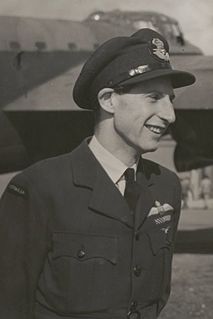 W
WPeter Stuart Isaacson, AM, DFC, AFC, DFM was an Australian publisher and decorated military pilot. He was the owner of Peter Isaacson Publications, publisher of various trade journals and suburban newspapers including the Southern Cross and the Sunday Observer in Melbourne. During World War II, he served in the Royal Australian Air Force (RAAF) as a pilot with RAF Bomber Command and was awarded the Distinguished Flying Cross, the Air Force Cross and the Distinguished Flying Medal.
 W
WIan William Geddes Johnson, was an Australian cricketer who played 45 Test matches as a slow off-break bowler between 1946 and 1956. Johnson captured 109 Test wickets at an average of 29.19 runs per wicket and as a lower order batsman made 1,000 runs at an average of 22.92 runs per dismissal. He captained the Australian team in 17 Tests, winning seven and losing five, with a further five drawn. Despite this record, he is better known as the captain who lost consecutive Ashes series against England. Urbane, well-spoken and popular with his opponents and the public, he was seen by his teammates as a disciplinarian and his natural optimism was often seen as naive.
 W
WKenneth Howard "Killer" Kearney was an Australian rugby footballer – a dual-code international player – and a rugby league coach. He represented the Wallabies in seven Tests, and the Kangaroos in thirty-one Test matches and World Cup games. He captained Australia in nine rugby league Test matches in 1956 and 1957. He was a hooker and captain-coach with the St. George Dragons in the first half of their eleven-year consecutive premiership winning run from 1956 to 1966. He is considered one of Australia's finest footballers of the 20th century.
 W
WLeslie Gordon Knight, was a Royal Australian Air Force pilot who served with the Royal Air Force's Bomber Command during the Second World War. He was awarded the Distinguished Service Order in 1943 for taking part in Operation Chastise – the Dams raid, while flying with No. 617 Squadron RAF. Knight's crew, flying in N-Nan, attacked, hit and breached the Eder Dam, the second dam to be attacked, after his comrades had previously scored one hit and one miss.
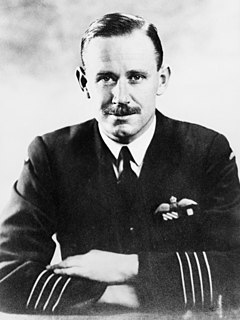 W
WJohn Margrave Lerew, DFC was an officer and pilot in the Royal Australian Air Force (RAAF) during World War II, and later a senior manager in the International Civil Aviation Organization (ICAO). As commander of No. 24 Squadron, based in New Britain, he became famous in the annals of Air Force history for his irreverent response to orders by headquarters in Australia during the Battle of Rabaul in January 1942. After his squadron was directed to assist in repelling the invading Japanese fleet with its one serviceable bomber, and to keep its damaged airfield open, Lerew signalled headquarters with the ancient Latin phrase supposedly used by gladiators honouring their Emperor: "Morituri vos salutamus". He also defied an order to abandon his staff, and organised their escape from Rabaul.
 W
WAir Marshal Sir Harold Brownlow Morgan "Micky" Martin, was an Australian bomber pilot and senior commander in the Royal Air Force (RAF). He took part in Operation Chastise, the RAF's "Dambusters" raid in 1943, and was described by journalist Sir Max Hastings as "one of the three great bomber pilots of the war". He rose to become a senior officer in the RAF, commanding RAF Germany and later serving as Air Member for Personnel, a member of the Air Council, the RAF's controlling body.
 W
WColin Leslie McCool was an Australian cricketer who played in 14 Tests from 1946 to 1950. McCool, born in Paddington, New South Wales, was an all-rounder who bowled leg spin and googlies with a round arm action and as a lower order batsman was regarded as effective square of the wicket and against spin bowling. He made his Test début against New Zealand in 1946, taking a wicket with his second delivery. He was part of Donald Bradman's Invincibles team that toured England in 1948 but injury saw him miss selection in any of the Test matches.
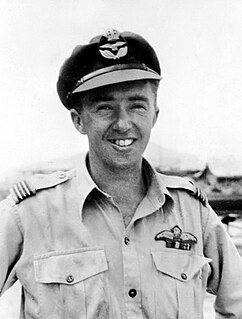 W
WAir Chief Marshal Sir Neville Patrick McNamara, was a senior commander of the Royal Australian Air Force (RAAF). He served as Chief of the Air Staff (CAS), the RAAF's highest-ranking position, from 1979 until 1982, and as Chief of the Defence Force Staff (CDFS), Australia's top military role at the time, from 1982 until 1984. He was the second RAAF officer to hold the rank of air chief marshal.
 W
WGuy Lambton Menzies was an Australian aviator who flew the first solo trans-Tasman flight, from Sydney, Australia to the West Coast of New Zealand, on 7 January 1931.
 W
WRawdon Hume "Ron" Middleton, VC was a bomber pilot in the Royal Australian Air Force and a posthumous recipient of the Victoria Cross, the highest award for gallantry in the face of the enemy that can be awarded to British and Commonwealth forces.
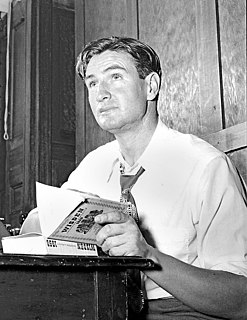 W
WKeith Ross Miller, was an Australian Test cricketer and a Royal Australian Air Force pilot during World War II. Miller is widely regarded as Australia's greatest ever all-rounder. His ability, irreverent manner and good looks made him a crowd favourite. English journalist Ian Wooldridge called Miller "the golden boy" of cricket, leading to his being nicknamed "Nugget". He "was more than a cricketer ... he embodied the idea that there was more to life than cricket".
 W
WFrank Neale, AFC was a British-born Australian aviator. Born in England, he served in the Royal Flying Corps and the Royal Air Force during the First World War, then moved to Australia in the mid-1920s to continue a notable career as a pioneer aviator. From 1925 until 1939 he flew thousands of hours covering most of Australia, and ventured overseas a number of times. At the outbreak of the Second World War he joined the Royal Australian Air Force Reserve, rising to wing commander and being awarded the Air Force Cross prior to his discharge in 1946.
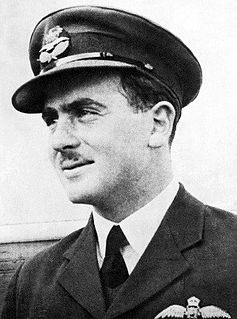 W
WWilliam Ellis (Bill) Newton, VC was an Australian recipient of the Victoria Cross, the highest decoration for gallantry in the face of the enemy that can be awarded to a member of the British and Commonwealth armed forces. He was honoured for his actions as a bomber pilot in Papua New Guinea during March 1943 when, despite intense anti-aircraft fire, he pressed home a series of attacks on the Salamaua Isthmus, the last of which saw him forced to ditch his aircraft in the sea. Newton was still officially posted as missing when the award was made in October 1943. It later emerged that he had been taken captive by the Japanese, and executed by beheading on 29 March.
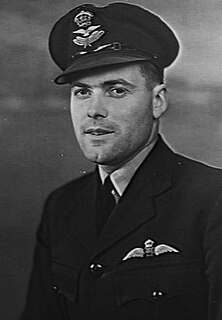 W
WJohn Verdun "Jack" Newton was an Australian politician and Royal Australian Air Force (RAAF) officer. While serving with the RAAF in Europe during the Second World War, Newton was elected to the Parliament of Western Australia for the seat of Greenough at the 1943 state election, but was killed in action 55 days later.
 W
WJustin Hilary O'Byrne, AO was an Australian politician who served as a Senator for Tasmania from 1947 to 1981, representing the Australian Labor Party (ALP). He was President of the Senate from 1974 to 1975, including for the duration of the 1975 constitutional crisis that resulted in the dismissal of the Whitlam Government.
 W
WSquadron Leader Beaufort Mosman Hunter "Beau" Palmer, was an Australian aviator of the Second World War who was recognised as one of Australia's finest wartime pilot instructors.
 W
WGeorge Frederick "Ted" Regan was an Australian rules footballer who played for Melbourne and Essendon in the Victorian Football League (VFL).
 W
WDavid John Shannon, DSO & Bar, DFC & Bar was an Australian bomber pilot of World War II, known for his part in the "Dambusters" raid on the night of 16/17 May 1943. Born in South Australia, Shannon joined the Royal Australian Air Force (RAAF) in 1941 and learned to fly under the Empire Air Training Scheme. After further training in the United Kingdom he was posted to No. 106 Squadron RAF, operating Avro Lancaster heavy bombers, and was awarded the Distinguished Flying Cross (DFC) in January 1943.
 W
WStanley (Stan) George Sismey OAM was an Australian cricketer. Sismey, who achieved the rank of Squadron Leader in the Royal Australian Air Force (RAAF) during World War II, was the official Commanding Officer of the Australian Services XI that played England in the Victory Test series that followed VE Day. He was not, however, the on-field Captain, an honour bestowed upon pre-war test cricketer Lindsay Hassett. Sismey was the team's wicketkeeper and a middle order batsman during the five unofficial Test matches.
 W
WLouis Thomas Spence, DFC & Bar was a fighter pilot and squadron commander in the Royal Australian Air Force (RAAF). During World War II he flew with No. 3 Squadron, earning the Distinguished Flying Cross (DFC), and commanded No. 452 Squadron, receiving a Mention in Despatches. He led No. 77 Squadron in the opening months of the Korean War, and was awarded a bar to his DFC, as well as the US Legion of Merit and the US Air Medal, for his leadership.
 W
WRoss Milton Stanford was a South Australian first class cricketer who served in the Royal Australian Air Force (RAAF) as a pilot during the Second World War, flying Avro Lancaster heavy bombers over Europe. During his military career, Stanford flew 47 operational missions and served in the famed No. 617 Squadron RAF. He also represented the Australian Services XI at cricket, playing games in England, India, Ceylon and Australia before being demobilised in 1946. In civilian life, Stanford ran his own market garden business, worked for the State Bank of South Australia and had an unsuccessful political career. He was also known for his charity work in Adelaide.
 W
WSir Patrick Gordon Taylor,, commonly known as Bill Taylor, was an Australian aviator and author. He was born at Mosman, Sydney, and died in Honolulu.
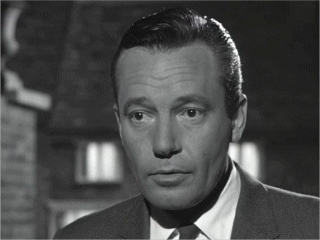 W
WCharles William Tingwell AM, known professionally as Bud Tingwell or Charles 'Bud' Tingwell, was an Australian film, television, theatre and radio actor. One of the veterans of Australian film, he acted in his first motion picture in 1946 and went on to appear in more than 100 films and numerous TV programs in both the United Kingdom and Australia.
 W
WKeith William "Bluey" Truscott, was a World War II ace fighter pilot and Australian rules footballer with the Melbourne Football Club. After joining the Royal Australian Air Force in 1940, he became the second-highest-scoring Australian World War II ace, credited with 20 confirmed victories and 5 unconfirmed victories.